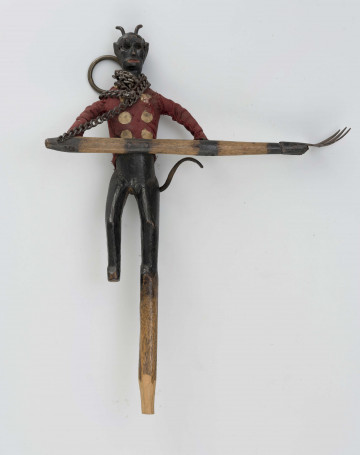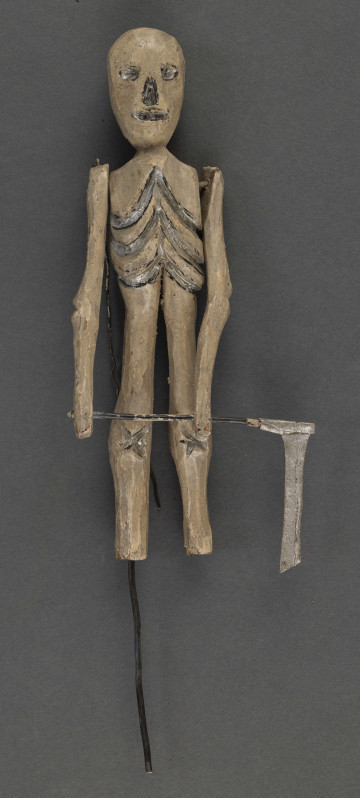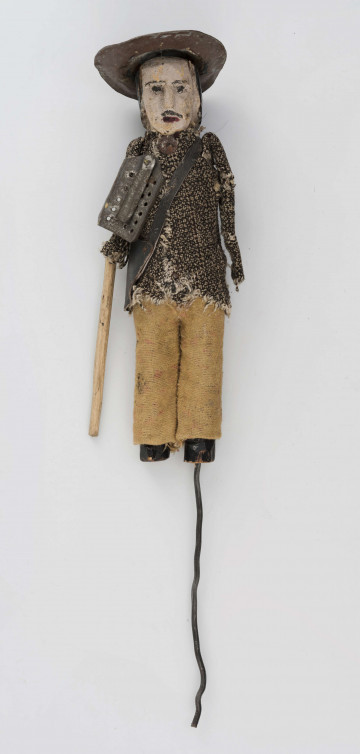
‘Devil’ puppet from the Nativity scene
1901 — 1920
National Museum in Lublin
Part of the collection: Folk craft of the Lublin Region (19th/20th c.)
A carol with a nativity scene was an example of a very popular puppet theatre. It originated in the middle of the 18th century, when as a form of a nativity play, due to its increasingly secular and sometimes bawdy character, it was removed from the churches and together with the carol singers went out into the streets.
Folk nativity scenes (from the Old Polish word jasło meaning manger), presented using nativity scene puppets, were a homely story about the birth of Jesus, the joy of the people, the worship of the Three Kings and the shepherds, Herod's plot, his crimes and infamous death. Biblical themes were mixed with Polish realities, genre scenes and events drawn from the lives of local villagers and towns. The main characters, i.e. the Holy Family with the Child, were sometimes indicated by a picture or paper silhouettes placed at the back of the stage or above in the case of a two-storey house.
In carolers' cribs there were characters known from the Bible - Herod and his court and the Three Kings from the East, as well as people of Polish origin with familiar-sounding names: Kuba, Bartosz, Maciek, Szymon. There were also people going to Bethlehem through snow-covered roads and wilderness: farmers, fishermen, itinerant and local craftsmen, peddlers and shopkeepers, as well as soldiers or foreigners settled in Poland: a Jew - a peddler or innkeeper, a Hungarian - an oil salesman, a Gypsy, a Muscovite, a German. There was no lack of characters from Polish folklore appearing in legends and fairy tales: a grandfather-pilgrim, a witch, a devil and death, which in the final scene of the performance beheaded the treacherous King Herod.
The number of puppets varied greatly (from ten to twenty). On the nativity scene, the puppets were led on a wooden handle or wire through a slot along the stage in the floor of the house. Sometimes some may have had limited movements, for example the witch would move the pestle in the buttery pan, the devil would wave his pitchfork, death his scythe, the soldier would salute and the grandfather would shake his purse to ask for donations. King Herod's head was often placed on a peg-neck so loosely that it would fall off when touched by death with a scythe. The figures appeared on the stage one by one, singly or in pairs, rarely in larger groups, delivering their lines, and then disappeared to make way for the next.
Author / creator
Dimensions
cały obiekt: height: 29 cm
Object type
puppet
Technique
mixed technique
Material
wood, fabric, paint
Creation time / dating
Creation / finding place
Owner
The National Museum in Lublin
Identification number
Location / status

1901 — 1920
National Museum in Lublin

1901 — 1920
National Museum in Lublin

1880 — 1910
National Museum in Lublin
DISCOVER this TOPIC
Museum of King Jan III's Palace at Wilanów
DISCOVER this PATH
Educational path